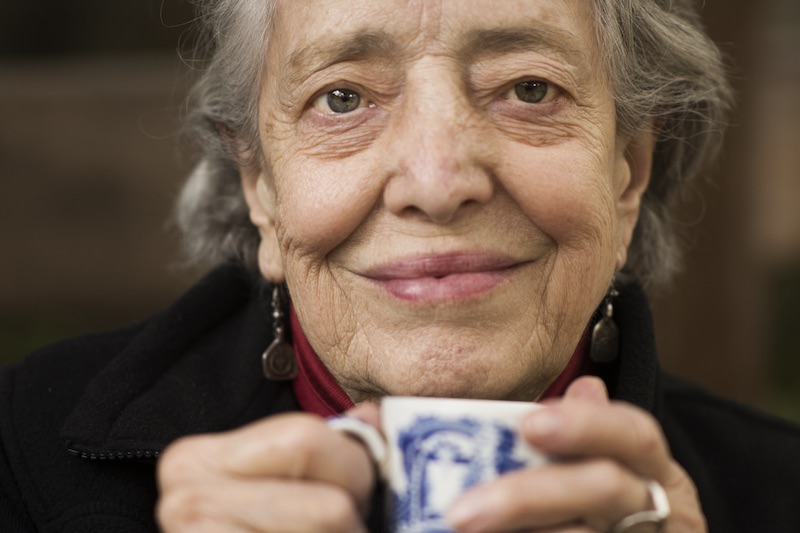Elisabeth Cummings: Being Timeless
In her six-and-a-half-decade practice, Elisabeth Cummings has become recognised as one of the most important painters of her generation.
Words: Sasha Grishin
Photography: Michael Bradfield
Elisabeth Cummings is an artist who has improved with age. Although she has always been a competent painter, it is over the past few decades that she has really found her own voice. And her quiet, tonal paintings of landscapes and domestic interiors have in turn attracted national attention and critical acclaim. Through her distinctive, vibrant, yet intimate image of the Australian landscape, imbued with a distinctly female sensibility, Cummings is increasingly regarded as one of the most significant painters of her generation.
Cummings was born in Brisbane in 1934, the daughter of an architect and a teacher. At the age of 19, Cummings moved to Sydney and studied at East Sydney Tech (now the National Art School), which was at the time the leading art school in Sydney. Here she came under the spell of artists John Passmore, Wallace Thornton, Godfrey Miller and Ralph Balson. On being awarded the New South Wales Travelling Art Scholarship in 1958, she spent the next decade in Europe, based mainly in Florence, but with extended visits to France and England. In 1960, she spent a month at the School of Vision in Salzburg studying with Oskar Kokoschka.
Cummings was back in Sydney in 1969, where she commenced teaching at East Sydney Tech on a part-time basis, as well as at numerous other art schools – something that she continued to do for the next 30 years. In 1970, she settled in Wedderburn – a rural retreat outside Campbelltown on the Georges River south of Sydney – with a group of other artists. Today she divides her time between Wedderburn and Sydney.
When asked about the artists whom she considers as having had an impact on her development, the names Giorgio Morandi and Georges Braque she prefaces with the words, “I adore”. Others to whom she pays homage include Australians Ian Fairweather, Fred Williams, Ken Whisson, Clarice Beckett, Grace Cossington Smith, Dorrit Black and Grace Crowley, as well as Richard Diebenkorn, Pierre Bonnard, Jean-Édouard Vuillard, Henri Matisse, Max Beckmann, Frank Auerbach, Willem de Kooning and Arshile Gorky in Europe and America.
In some of her earlier works, Cummings employed the lingua franca of painters emerging out of East Sydney Tech in the 1950s, with their Passmore- inspired interpretations of Cézanne. Subsequently, in the 1970s, Cummings eagerly embraced the French Intimist painters, Vuillard and Bonnard, which was coupled with an awareness of the late painted interiors of Cossington Smith. The results were charming and sensitive interiors, with much in common with her sources.
But the best of Cummings’ paintings take the landscape as a point of departure, which she interprets with confident, sweeping gestural marks that negate the literalness of the image. Her earlier, heavily painted canvases subsequently gave way to a lightness of touch with a drier, scrappier surface that could bring to mind a parallel with Fairweather. Many of her works are memory paintings that grow of their own accord, with the sketches and photographs acting as an aide memoir. When working in the studio, she notes that, “the painting takes on a life of its own and dictates the way it develops”.
Cummings is a free spirit who has created a very personal and intimate relationship with the landscape that she has grown to understand from the inside. This sense of excitement and intimacy is shared passionately with her audience, perhaps more convincingly than with many other artists. Her paintings, almost without exception, are beautifully structured, highly personal, lyrical and often possess a touch of whimsy. Her work breathes with freshness, energy and great visual resonance.
Although Cummings has been a very consistent artist, she has only achieved widespread recognition in the past couple of decades. Her work is well-represented in the collections of the Art Gallery of New South Wales and the National Gallery of Australia in Canberra. Her best paintings belong to her work from the past 25 years, along with some of her spirited atmospheric monotypes. Her ceramics, made in collaboration with Lino Alvarez, are rare, but are highly prized and frequently take the form of small stage sets inhabited by little figures and are quite distinct from her paintings and graphics.
In 2017, Sioux Garside curated a major survey exhibition of Cummings’ paintings, graphics and ceramics that toured New South Wales and Canberra. The catalogue is the most up-to-date account of her practice and the website of her gallery, King Street Gallery on William, contains links to many of the publications associated with her art practice.
This article was originally published in Art Collector issue 86, OCT – DEC 2018.











